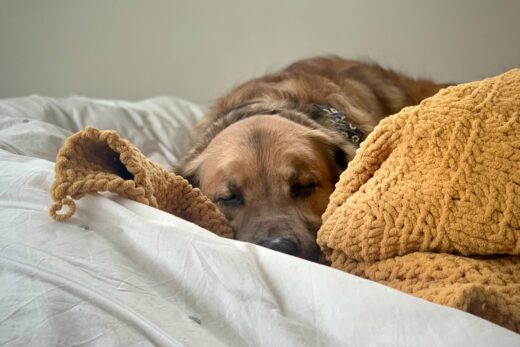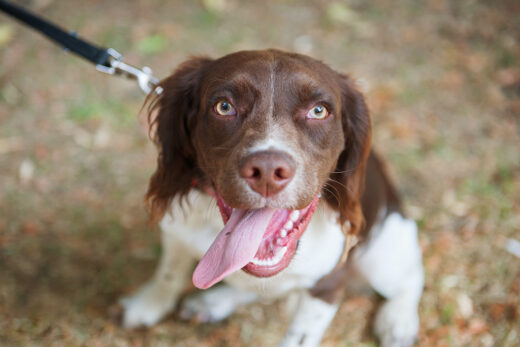More than 200 people every month search for “how to stop a dog from lunging on a leash,” meaning there are a lot of dogs who seem aggressive and hard to manage, potentially even dangerous when all they really need is reactive dog training.
What is a reactive dog?
A reactive dog has an exaggerated response to stimuli such as seeing other dogs, other animals, and people, and hearing triggering noises. Taking an offensive posture around dogs and humans is the most common form of reactivity in dogs.
It also occurs most often when the dog is on the leash, but dogs can also be reactive in the car or at home.
Reactivity in dogs makes walks, car rides, or daily living a stressful event, and it can lead to dangerous situations for others and your dog. Without reactive dog training, your dog may be considered a threat and/or you may have to surrender them.
The stages of reactivity in dogs
Reactivity will begin with signs of anxiety, such as unusual barking, panting, whining, hyper excitability, and hyper vigilance in the presence of dogs, humans, and other animals.
Eventually they will begin making offensive postures like snarling, worsened barking, and lunging.
Left unaddressed or improperly addressed(as in you made the dog more anxious), the dog can become violent. It will then become unsafe to take them for walks, have them in the car, etc.
Why are dogs reactive? What are they thinking?
Reactive dogs are insecure and taking aggressive measures to alleviate their anxiety. That is why you have to be mindful of the dog’s mental state to effectively manage reactivity. You can’t control or scold them out of it. They have a feeling and will act. This feeling actually wires their brain in a certain way that they can’t help. Thankfully, you can rewrite this with the right training, specific reactive dog training.
Reactive Dog Training Tips
Why Reactive Dog Training?
The dog is insecure and acting on that insecurity. Watching them lunge when on the leash with you is alarming and your natural instincts may be to pull at their leash or yell. Your fear just makes the dog more afraid, and scolding them, pulling on the leash, and other similar actions cause negative associations with walks and socialization. These negative associations will actually make the dog more reactive. Now they just have more to be upset about.
To address reactivity, you have to take control, remain calm, and use methods that will lessen the dog’s anxiety.
Timeframe for reactive dog training
There isn’t a quick fix for reactive dogs. It is a deep-seated problem, built up over a long time or caused by chemicals in the brain.
You can help your reactive dog. Just don’t get discouraged or blame them when you don’t get quick results and do be prepared to carry out the training for a length of time.
Some dogs may be “cured” of reactivity in a matter of days while others may take weeks or months. You will have to maintain your cool attitude and training methods even after they begin to act normally to ensure they stay calm, and if they suffer a severe mental strain, reactivity might come back. You will then have to train them again.
Steps of reactive dog training
Dog blinders – too easy?
The easiest tactic is to slap dog blinders on your dog. If they can’t see the trigger, how can they can get upset by it? Well, blinders only cover part of the dog’s vision, so the dog is still capable of seeing other dogs and people, just not as often. And having their vision obscured can make the dog more anxious. We don’t like being blind, even if it is just part of our vision. It can make dogs anxious too. Imagine feeling that someone is threatening you and not being able to see what’s happening.
There is a remote possibility that a dog may actually respond well to dog blinders, the fear of not being able to see being less than the fear of what they’re seeing. You could try blinders if you wish, but don’t neglect the rest of their training and don’t be surprised if it doesn’t work.





